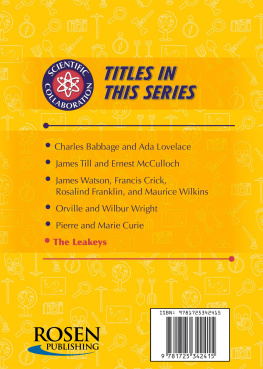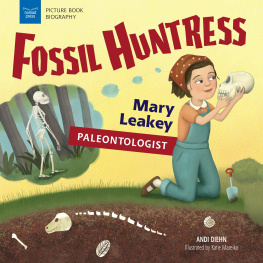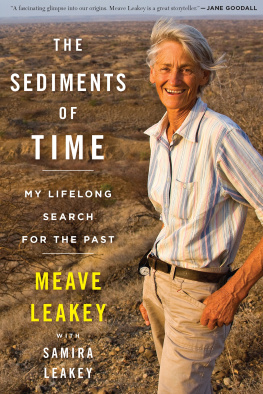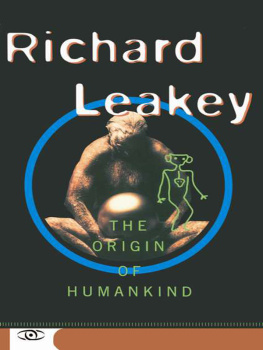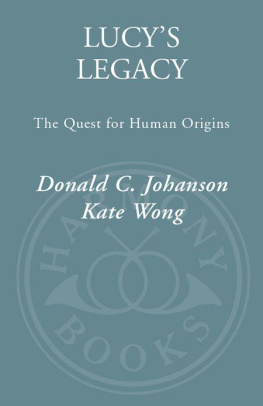
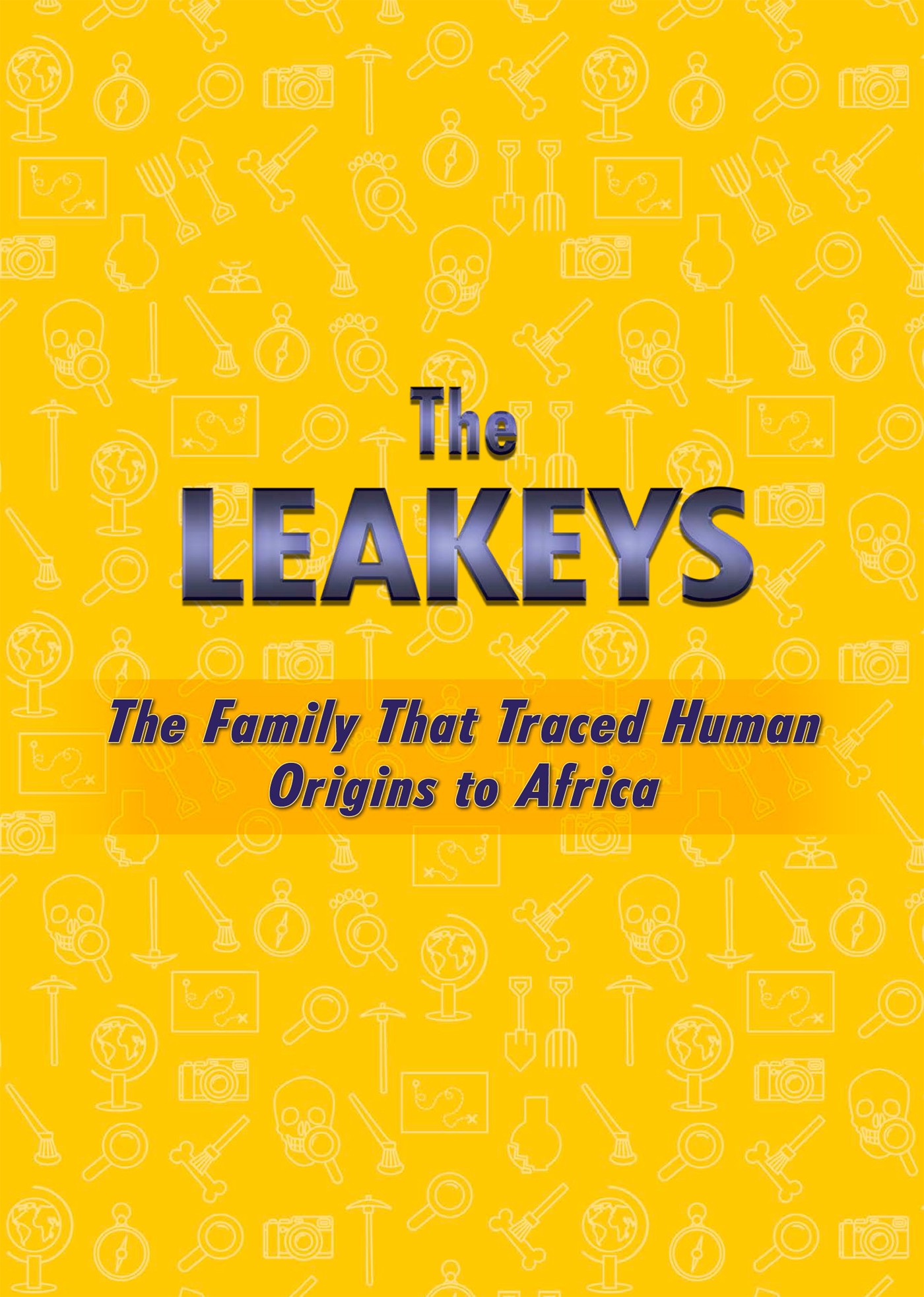
Published in 2021 by The Rosen Publishing Group, Inc.
29 East 21st Street, New York, NY 10010
Copyright 2021 by The Rosen Publishing Group, Inc.
All rights reserved.
No part of this book may be reproduced by any means without the written permission of the publisher.
Library of Congress Cataloging-in-Publication Data
Names: Timmons, Angie.
Title: The Leakeys: the family that traced human origins to Africa / Angie Timmons.
Description: New York: Rosen Publishing, 2021. | Series: Scientific collaboration | Includes glossary and index.
Identifiers: ISBN 9781725342408 (pbk.) | ISBN 9781725342415 (library bound)
Subjects: LCSH: Leakey, L. S. B. (Louis Seymour Bazett), 1903-1972--Juvenile literature. | Leakey, Mary D. (Mary Douglas), 1913-1996--Juvenile literature. | Leakey, L. S. B. (Louis Seymour Bazett), 1903-1972. | Leakey, Mary D. (Mary Douglas), 1913-1996. | Anthropologists--Kenya--Biography--Juvenile literature. | Fossil hominids--Africa, East--Juvenile literature.
Classification: LCC GN21.L37 T56 2021 | DDC 301.092 B--dc23
Printed in the United States of America
Photo Credits: Cover, pp.
CPSIA Compliance Information: Batch #BSR20. For further information contact Rosen Publishing, New York, New York at 1-800-237-9932.

CONTENTS

Introduction
O ne sweltering day in the hills of Western Kenya, four-year-old Richard Leakey was tired, hot, and hungry. He complained to his parents that he wanted to go home for lunch. They were busy digging for fossils while their bored young son waited on them. In response, his father shouted something most young children would never hear from their parents: Go and find your own bone!
But Richard Leakey was not like most children his age, and his parents, Louis and Mary Leakey, were definitely not like most other parents: They were famous paleoanthropologists (scientists who study human origins) and archaeologists who had achieved worldwide notoriety for their findings in Africa.
Knowing his dedicated scientific parents would never stop working just because he wanted to go home, Richard took his fathers advice and started digging. Upon spotting a small bone, he began to carefully dig it out using the techniques hed observed his parents use since he was a toddler. The bone got bigger. As he kept digging around it, he saw that the bone had teeth. All of a sudden, his boredom and other complaints were gone. He went quiet, carefully viewing this find. His parents eventually noticed hed been missing for a while and went in search of their small son. Within minutes, Richard was pushed aside as Louis and Mary enthusiastically took over the excavation. What Richard had found was the first complete jaw of an extinct species of pig ever discovered. His find resulted in an entirely new excavation project led by his parents.

Mary and Louis Leakey dedicated their lives to their work. Along with their children, they made some of the greatest discoveries of all time.
By the time Richard found the pig jawbone, his father had been digging for fossils in Africa for about two decades. In the 1930s, Louis, who had grown up in Kenya as the son of British missionaries, rocked the scientific community when he found a fossil proving that human life had evolved in Africa, disproving the long-held theory that human life had evolved in Asia. With this find, Louis irrevocably altered the course of scientific thinking and research priorities. When Louis wed Mary Nicol, an English artist and archaeologist, in 1936, the couple made Africa their home and devoted their lives to archaeological finds that consistently challenged scientific perceptions about human origins.
Perhaps as intriguing as Louis and Marys archaeological finds is that paleoarchaeology became a family business when they had children. The couple famously brought their three sons, Jonathan, Richard, and Philip, to their excavation sites as soon as Mary could return to work after childbirth. The three sons have had varying levels of involvement in their parents chosen field, with Richard and his wife, Meave, especially making scientific headlines with their findings.
Louis and Marys legacy has been carried on by their descendants, making the familyboth then and nowa truly shining example of the extraordinary achievements made possible through collaboration. Over nearly one hundred years, the Leakeys have continued to contribute to the family business, making them the First Family of Paleontology.

Origins
I n an 1871 publication called The Descent of Man, the English scientist Charles Darwin (18091882) predicted that human origins would be found in Africa. His prediction was based on some evolutionary human traits, such as walking on two feet and the use of tools. However, neither Darwin nor his peers had much evidence to either support or deny his theory.
Darwin wasnt the first to look for a link between modern humans and ancient ancestors. A few scientists had sought evidence of human evolution and hominids, a family of primates that includes both extinct and existing species. Their theories revolved around the evolution of the species Homo sapiens (modern humans) and the more encompassing genus Homo, which includes Homo sapiens and some closely related extinct species. Homo had been the subject of debate among scientists who predated Darwin and his 1859 book On the Origin of Species, which is considered the foundation of evolutionary biology.
Out of Asia
Frustrated by lack of evidence to link modern humans to earlier species, Dutch anatomist Eugne Dubois traveled to present-day Indonesia in the late 1880s to look for evidence. He chose this area based on contemporary theories that humans were closely related to certain apes that lived in the region, leading him to believe he was traveling to the cradle of civilization. By the early 1890s, Dubois had found many fossils, including some he believed belonged to one ancient individual. The characteristics of the fossils, including bones indicating the individual had walked upright, led Dubois to claim hed found the missing link between modern humans and their evolutionary predecessors. The collected body parts, which were estimated to be between seven hundred thousand and one million years old, were called Java Man due to where they were found: the Indonesian island of Java. Thus, the Out of Asia theory began, with scientists flocking to Asia to search forand often findother fossils from the same general time period in which Java Man would have lived. Most of these fossils were certainly from the genus Homo, and some were even from the species Homo erectus, or upright walkers, who displayed bipedalism. The Out of Asia theory of human evolution prevailed throughout the late nineteenth century and through much of the first half of the twentieth century. In the 1930s, Louis Leakey would challenge the prevailing Out of Asia theory.

